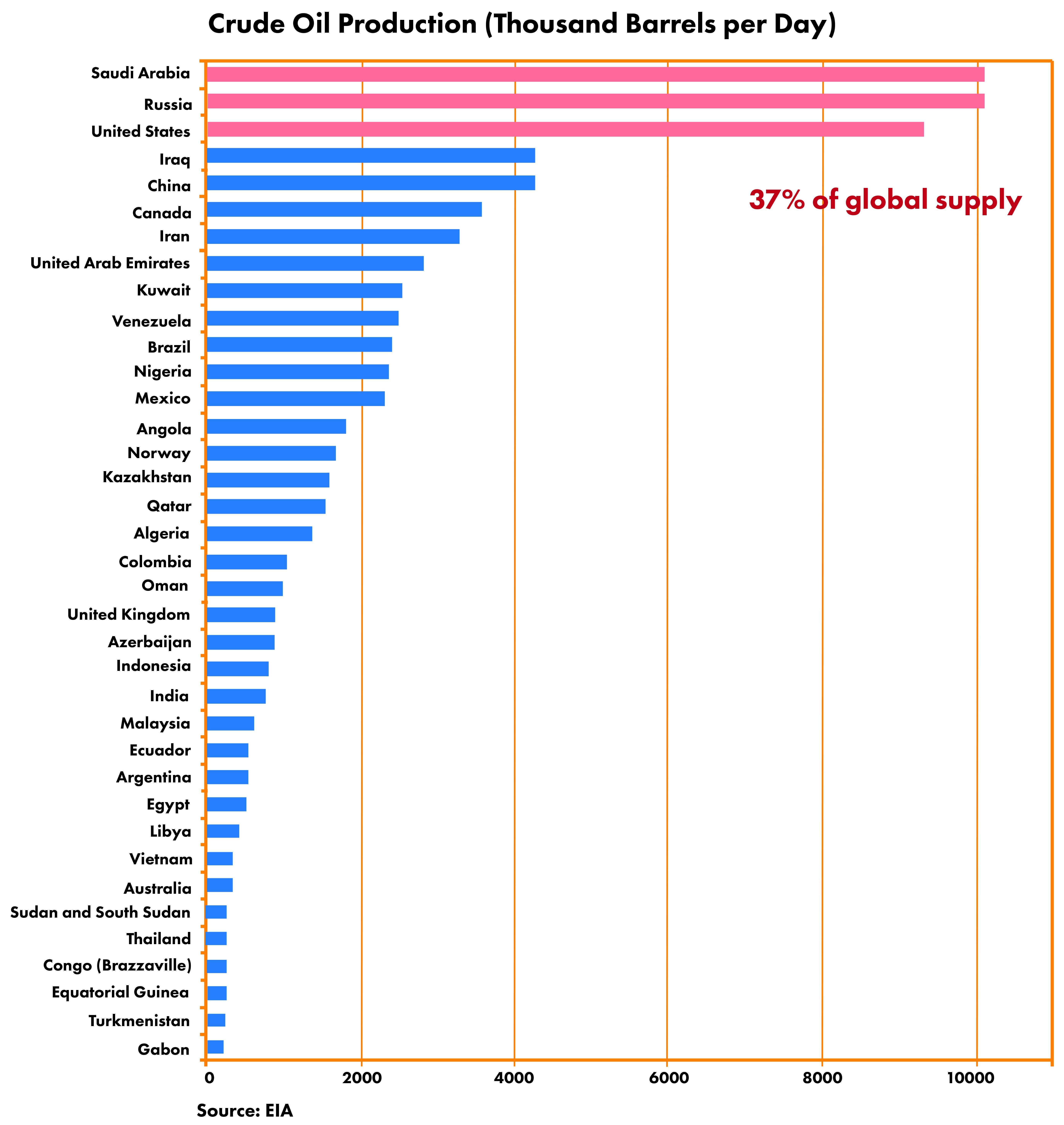

Historical oil production by country Patch#
The Andean country’s energy patch is being buffeted by many headwinds. Whether Colombia will remain among Latin America’s top five oil producers is questionable. By March 2023 output had risen to 771,732 barrels of oil per day, but like 2022 that volume was still well below the 885,851 barrels lifted during 2019 and substantially less than record 2013 production of just over one million barrels per day reached during 2013. That impressive output ranks Colombia as Latin America’s third-largest oil producer. sanctions are substantially loosened.įor a country with proved oil reserves amounting to a meager two billion barrels, strife-torn Colombia punches above its weight production wise having pumped an average of 754,199 barrels of oil per day for 2022. Caracas will not be able to attract that level of industry investment until the rule of law is guaranteed and strict U.S. It will take tremendous investment, estimated to be as much as $120 billion, and at least a decade to rebuild Venezuela’s oil industry.

Shattered oil industry infrastructure including leaking pipelines, inoperative refineries, and faulty wells are all weighing on operations. OPEC secondary data sources show that Venezuela pumped an average of 678,000 barrels per day for 2022 which grew to 695,000 barrels per day for March 2023.ĭespite the Biden White House easing some sanctions including allowing energy supermajor Chevron to return to lifting oil in Venezuela, there are signs that the OPEC member will struggle to lift production any higher. Since then, Venezuela’s oil output has recovered, somewhat, due to Caracas receiving assistance from allies such as Iran to rebuild heavily corroded infrastructure. After pumping an all-time high of 3.2 million barrels per day during 1997, according to OPEC data, production collapsed plummeting to a multi-decade low of 569,000 barrels per day for 2020 as the COVID-19 pandemic swept across the world. The fourth largest oil producer in Latin America is strife-torn Venezuela. It is forecast that Argentina’s oil production will grow to one million barrels per day by 2026 which will facilitate a notable increase in petroleum exports to 500,000 barrels per day. By March 2023, shale oil comprised 48.5% of Argentina’s total petroleum output up from 40.5% a year earlier.įoreign energy investment is also growing in part because of firmer oil prices but also due to President Fernandez implementing a package of tax and customs benefits for foreign energy companies operating in Argentina in August 2022. Development of the Vaca Muerta is being spearheaded by national oil company YPF, which was nationalized by the government of Cristina Fernandez de Kirchner in 2012. The exploitation of the geological formation is viewed by Buenos Aires as an economic silver bullet. There are signs Argentina’s hydrocarbon production will climb further with the Vaca Muerta shale formation, believed to contain 16 billion barrels of oil and 308 trillion cubic feet of natural gas, the engine of that growth. This indicates that Argentina’s oil industry has recovered from the pandemic and that production is steadily expanding as investment inflows grow. March 2023 petroleum output set a new monthly production record averaging 631,103 barrels per day. For 2022, Argentina pumped a record high of 582,387 barrels of crude oil per day, which was 13% greater than a year earlier and 14.5% greater than the 508,645 barrels per day lifted during 2019. Here are Latin America’s five largest oil producers.Ĭoming in fifth place is economically crisis-riven Argentina which is Latin America’s third-largest economy.

While Guyana has experienced a prodigious expansion of reserves and production it has yet to emerge as a top-five oil producer in Latin America and the Caribbean. Guyana’s emergence as a regional petroleum producer, with its offshore oil boom described as the world’s hottest frontier play, is adding to significant international interest in the region. sanctions, Latin America is attracting considerable interest from foreign energy companies. While regional production declined due to the collapse of Venezuela’s petroleum industry under the weight of corruption, malfeasance, and harsh U.S. This occurred because of Brazil’s immense offshore oil boom driven by that country’s ultra-deep-water pre-salt oilfields. Latin America emerged over the last two decades as one of the world’s top oil-producing regions.


 0 kommentar(er)
0 kommentar(er)
